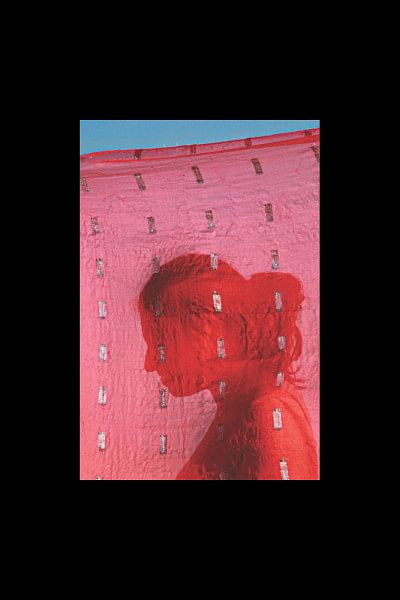What Happens to Invisible Bodies?

Photo: Kazi Tahsin Agaz Apurbo
The streets of Dhaka, and really, the entire country, exist in a kind of violence-ignorance dichotomy. We are ready at a moment's notice, it seems, to engage in any kind of mass public beating, regardless of what the victim's sins may have been. At the same time, we simultaneously seem to exist in a kind of Schrodinger-esque state of ignorance, too, where death and destruction may happen a mere five feet away from us, and yet we will continue walking. Clearly my errands are more important than your life. And so, when Labannya Hijra ran after and successfully held back the killers of Oyasiqur Rahman on the 30th of March, 2015, it created a rupture in the narrative of visible urban bodies. Who was this brave soul, who broke through the male dominance of sidewalks, of violence and silence to face fundamentalists with machetes?
And suddenly, the media took notice. Labannya Hijra did not fit under the accepted media narratives that are available to hijras in Bangladesh- where they are either criminal deviants who extort people on the streets or they are victims of great poverty and marginalisation and have no choice but to engage in what they do. We are led to either fear them, or feel sorry for them, sometimes both simultaneously. But even in celebrating Labannya, the Bangladeshi media called her a hermaphrodite, which is not only incorrect but also offensive. We even equated hijra to intersex (again, not always the same) and then, as the good patronisers that we are, we called for humanistic expansions of hijra rights while the government inspected genitalia to see whether or not someone is 'really' a hijra or not. The media's Labannya affair did not last long and we predictably went back to demonizing them and feeling sorry for them in a month's time.
What Labannya Hijra did was force the media's hand. There was no choice, really, but to speak of her in a different way because of the magnitude of her heroics against a fear that still chokes the urban elites. Why, then, we must ask, did Labannya Hijra get represented as a person with agency who made a brave choice only when she served the interests of the larger society? Are we to assume that the 99% of the other times she, or anyone from her community, has no agency? As far as the media goes, the answer is no. They have no agency unless they can be useful in some way to our interests- promoting an empty secularism and upholding Bengali hegemony.
Think back, too, to the countless stories of rape and violence against women from the working classes and from minority communities. How do we speak of them? For the media, a woman's rape is a point of no return. Not for the perpetrator, for we speak of them (mostly 'him') very little. The woman's life, however, is largely understood to be over, for the rest of her life will now be spoken of only in relation to the rape. Why does rape sell newspapers more than a story of women who have refused to define their lives by the violence of another?
Media representations are significant because they serve as markers outline the political interests of the media class. And no, we cannot shy away from a conversation that does not mark the media as idealistic because very few things exist in our political economy that is not for sale. By boxing the narratives of women, of hijras and of the indigenous communities into stories without agency, we sell middle class security. Because nothing frightens the middle and middle-upper class more than instances of working class and marginalized agency. Today, Labannya Hijra has sunk back silently into the streets of Dhaka, fighting for her survival on sidewalks dominated by men. But she remains today the symbol of resistance, for it was her actions and not the benevolence or sudden ethical revelations of the media class that prompted her visibility. And, if nothing else, let that be the beacon of hope that eventually forces the disruption of a status quo.

 For all latest news, follow The Daily Star's Google News channel.
For all latest news, follow The Daily Star's Google News channel. 



Comments